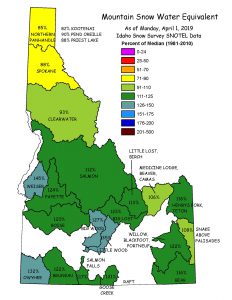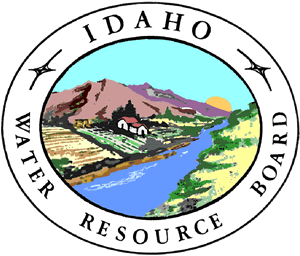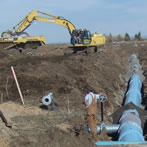The 2025 Idaho Legislature passed Senate Bill 1083a revising several statutes dealing with domestic uses of water, shared wells, and subdivisions. These statutory changes are effective on July 1, 2025. The changes to Idaho Code §§ 42-111 and 42-227 modified the requirements for establishing a water right for domestic purposes without applying to the Department of Water Resources (“IDWR”) for a permit. This opportunity is sometimes called the “domestic exemption.”
From this page, you can review the guidance IDWR issued to its staff members to help them apply the statutory changes affecting the domestic exemption. IDWR staff members will rely on this guidance to answer questions about the domestic exemption.
As experience with the revised statutes expands over time, IDWR may update its guidance to staff as needed to address frequently asked questions.
As revised by Senate Bill 1083a in 2025, Idaho Code § 42-111 states:
42-111 DOMESTIC PURPOSES DEFINED
(1) For purposes of sections 42-221, 42-227, 42-230, 42-235, 42-237a, 42-242, 2-243, and 42-1401A, Idaho Code:
(a) The phrase “domestic purposes” or domestic uses” means:
(i) The use of water for homes, organization camps, public campgrounds, livestock, and for any other purpose in connection therewith, including irrigation of up to one-half (1/2) acre of land, if the total use does not exceed thirteen thousand (13,000) gallons per day; or
(ii) The use of water for any other purpose, if the total use does not exceed a diversion volume of two and eight-tenths (2.8) acre feet per year.
(b) “Domestic purposes” or “domestic uses” shall not include water for the following purposes, unless the use meets the diversion rate and volume limitations set forth in paragraph (a) of this subsection:
(i) Mobile home parks or recreational vehicle parks;
(ii) Apartments, condominiums, and similar developments with multiple dwelling units;
(iii) Except as provided in subsection (3) of this section, subdivisions, as defined in chapter 13, title 50, Idaho Code; or
(iv) Commercial or business establishments or mixed-use establishments where the water is used primarily for commercial or business purposes.
(2) Except as provided in subsection (3) of this section, multiple water rights for domestic uses or domestic purposes shall not be established or exercised in a manner to satisfy a single combined water use or purpose that would not itself come within the definition of a domestic use or purpose under this section. The purpose of this limitation is to prohibit the diversion and use of water, under a combination of domestic purposes or domestic uses as defined in this section, to provide a supply of water for a use that does not meet the exemption of section 42-227, Idaho Code, and is required to comply with the mandatory application and permit process for developing a right to the use of water pursuant to chapter 2, title 42, Idaho Code.
(3) Multiple water rights for domestic purposes or uses may be established and exercised from the same point or points of diversion if the use is limited to residential, in-home use. This subsection does not affect any other permitting requirement or other requirement that may apply to the use of water within a subdivision. For the purposes of this section, the term “in-home use” means the utilization of water within a residence or household, including all activities that require water, such as drinking, cooking, bathing, and cleaning within and around the household. It does not include irrigation of lawns, gardens, landscaping, pastures, or other open spaces.
Guidance Documents
Administrator’s Memorandum | Application Processing No. 80 & Adjudication No. 62: Guidance for Implementing Revised Statutes for Domestic Uses
The following documents are tools to help determine whether water use is exempt or requires a permit under Idaho Code § 42-111:
Domestic Exemption Decision Table
Mapping Tool
To understand whether your proposed water use qualifies for the domestic exemption, you must know whether it will be located in a moratorium area, a critical ground water area, or a ground water management area. To help you determine whether your well will be in one of those regulated areas, visit the easy-to-use Moratoriums and Areas of Regulated Ground Water Development mapping tool.










